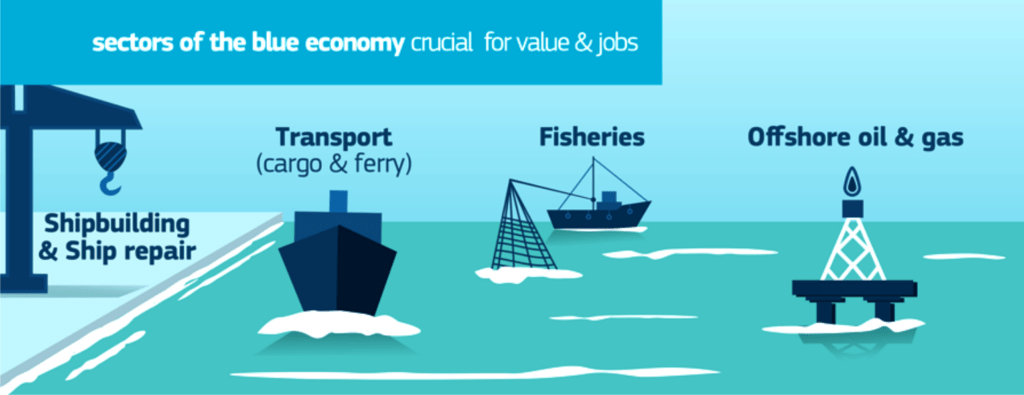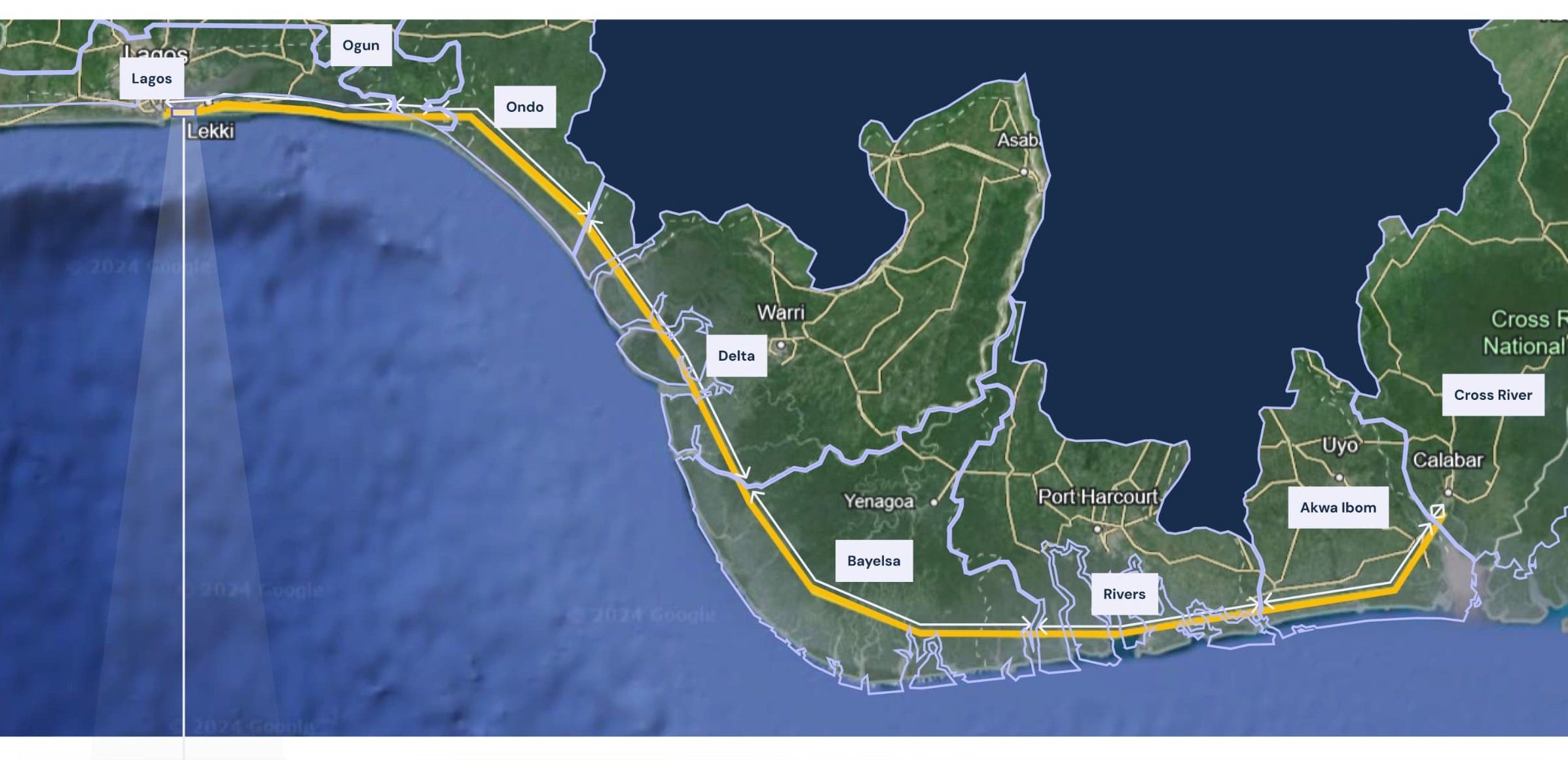By Afolabi Osho
When President Bola Ahmed Tinubu flagged off the Lagos–Calabar Coastal Highway in 2023, he promised a bold new artery that would link Nigeria’s six coastal states — and reconnect the country to its vast blue-economy potential.
Two years later, only about 35 kilometres of the projected 700 km route have been completed. Yet, along the Atlantic coastline from Lagos to Cross River, the conversation is no longer about whether the road will be built, but what it could unlock if it is.
“Nigeria’s blue economy has an estimated $296 billion potential,” the Nigerian Ports Authority recently noted. “But to access it, connectivity, logistics and infrastructure must align.”
The Lagos–Calabar project isn’t just an engineering dream; it’s an economic corridor that could redefine how Nigeria trades, travels and thrives along its shoreline.
A Road to the Blue Economy
The “blue economy” covers all activities connected to oceans, seas, and coasts — shipping, fisheries, maritime transport, offshore energy, coastal tourism, and emerging marine technologies.
For Nigeria, better coastal access could translate to jobs, food security, renewable-energy projects, and new smart-city hubs.
But the path to this transformation lies in how the coastal states — Lagos, Ogun, Ondo, Delta, Bayelsa, Rivers, Akwa Ibom, and Cross River — integrate the corridor into their local development agendas.
 Lagos: Commercial Launchpad of the Corridor
Lagos: Commercial Launchpad of the Corridor
Governor Babajide Sanwo-Olu’s Lagos remains the financial and logistics capital of Nigeria. The first 35 km segment of the highway — from Victoria Island through Eleko — forms its launchpad.
Lagos’s expanding Lekki Deep Sea Port, Free Trade Zone, and beachfront tourism districts stand to gain the most. The project promises to ease traffic pressure, shorten travel to the East, and boost marine tourism.
Breakout:
Potential: Port logistics, beach tourism, smart-city expansion, blue-tech jobs
Challenge: Urban displacement and environmental concerns along the shoreline
Ogun: The Emerging Industrial Coast
To the east, Governor Dapo Abiodun envisions Ogun as the industrial buffer to Lagos. The highway could extend the state’s role as a manufacturing and logistics hub, linking inland factories to coastal exports and tourism zones.
With investments in agro-processing and seaport access, Ogun could become a critical service and transport corridor for the blue economy.
Ondo: Gateway to Eco-Tourism and Fisheries
Under Governor Lucky Aiyedatiwa, Ondo State is positioning its coastline as a new frontier for eco-tourism, fisheries, and maritime logistics.
The state’s expansive river mouths and coastal lagoons can support fish-farming clusters and marine transport terminals — but they need roads to thrive.
The corridor, if completed, could turn the coastal town of Igbokoda into a maritime hub linking Ondo’s interior economy to Nigeria’s sea trade.
Delta: From Oil Belt to Marine Economy
In Delta State, Governor Sheriff Oborevwori faces the challenge of diversifying an oil-dependent economy. With its creeks and inland waterways, Delta is perfectly placed for coastal shipping, aquaculture, and port-based logistics.
Improved highway access could spur investments in marine food processing and tourism, redefining Delta beyond crude oil.
Bayelsa: Unlocking the Riverine Heartland
Governor Douye Diri’s Bayelsa has the longest shoreline in Nigeria, stretching deep into the Niger Delta. Yet, decades of isolation have limited its growth.
The Lagos–Calabar highway could finally bridge this gap — connecting Bayelsa’s oil towns and fishing settlements to regional markets. The state’s dream of eco-tourism resorts, aquaculture estates, and river transport terminals could become reality if the corridor integrates its creeks with the national economy.
Rivers: The Maritime Powerhouse
Governor Siminalayi Fubara’s Rivers State already hosts Nigeria’s most active ports in Port Harcourt and Onne, alongside a strong maritime workforce.
With new coastal access, Rivers could expand its marine engineering, shipbuilding, and blue-energy industries, strengthening its role as the maritime heart of the southern corridor.
The state also holds major tourism potential — from Bonny Island’s heritage to Andoni’s pristine mangrove parks — that improved road connectivity could bring within reach.
Breakout:
Rivers is Nigeria’s maritime powerhouse — but needs infrastructure to anchor the next generation of blue-economy jobs.
Akwa Ibom: Rising Star of Coastal Tourism
In Governor Umo Eno’s Akwa Ibom, a new maritime university and deep-sea projects are already in the works. The state’s beaches and offshore zones offer dual potential: marine logistics and tourism.
The corridor could drive resort development and port connectivity, positioning Akwa Ibom as a modern “smart coastal city” that blends energy, shipping, and leisure.
Cross River: The Eastern Anchor
At the far end of the route, Governor Bassey Otu’s Cross River State hosts the historic port of Calabar — the intended terminus of the highway.
For Cross River, this is both economic and symbolic. The corridor could revive the Calabar Port, draw more cruise and cargo traffic, and reconnect the state’s beaches and nature parks to national and regional markets.
If complemented by tourism promotion and policy incentives, the state could become Nigeria’s most dynamic gateway to Central Africa.
The Big Picture: Connectivity That Counts
Nigeria’s coastline stretches over 853 km, touching eight states and offering almost every blue-economy advantage — fisheries, oil and gas, transport, energy, tourism, and biodiversity.
But without roads, ports, and power, those resources remain potential rather than performance. The Lagos–Calabar Coastal Highway could finally bind these opportunities together, allowing the private sector to build logistics hubs, hotels, shipyards, and fish farms along a single, connected corridor.
Breakout Quote:
“It’s not just asphalt; it’s access — to jobs, to trade, to a future that flows with the tide of opportunity.”
Cautions Along the Coast
Still, the road faces controversies and caution signs.
-
Only about 35 km has been completed so far, mainly within Lagos.
-
Critics cite transparency and environmental concerns over demolition of coastal communities.
-
The estimated cost runs into multiple trillions of Naira, raising financing questions.
-
Without coordinated policies, the corridor could become a concrete strip with no economic integration.
Environmentalists warn that mangrove loss and sea-level rise could erode the benefits unless strong coastal management is built into the plan.
A National Turning Point
If successfully delivered, the Lagos–Calabar corridor could transform Nigeria’s coastal belt from an underdeveloped periphery into a thriving blue-economy powerhouse.
From Lagos’s smart ports to Cross River’s tourism coast, the project embodies a vision where infrastructure meets innovation — and where Nigeria finally turns its face back to the sea.


